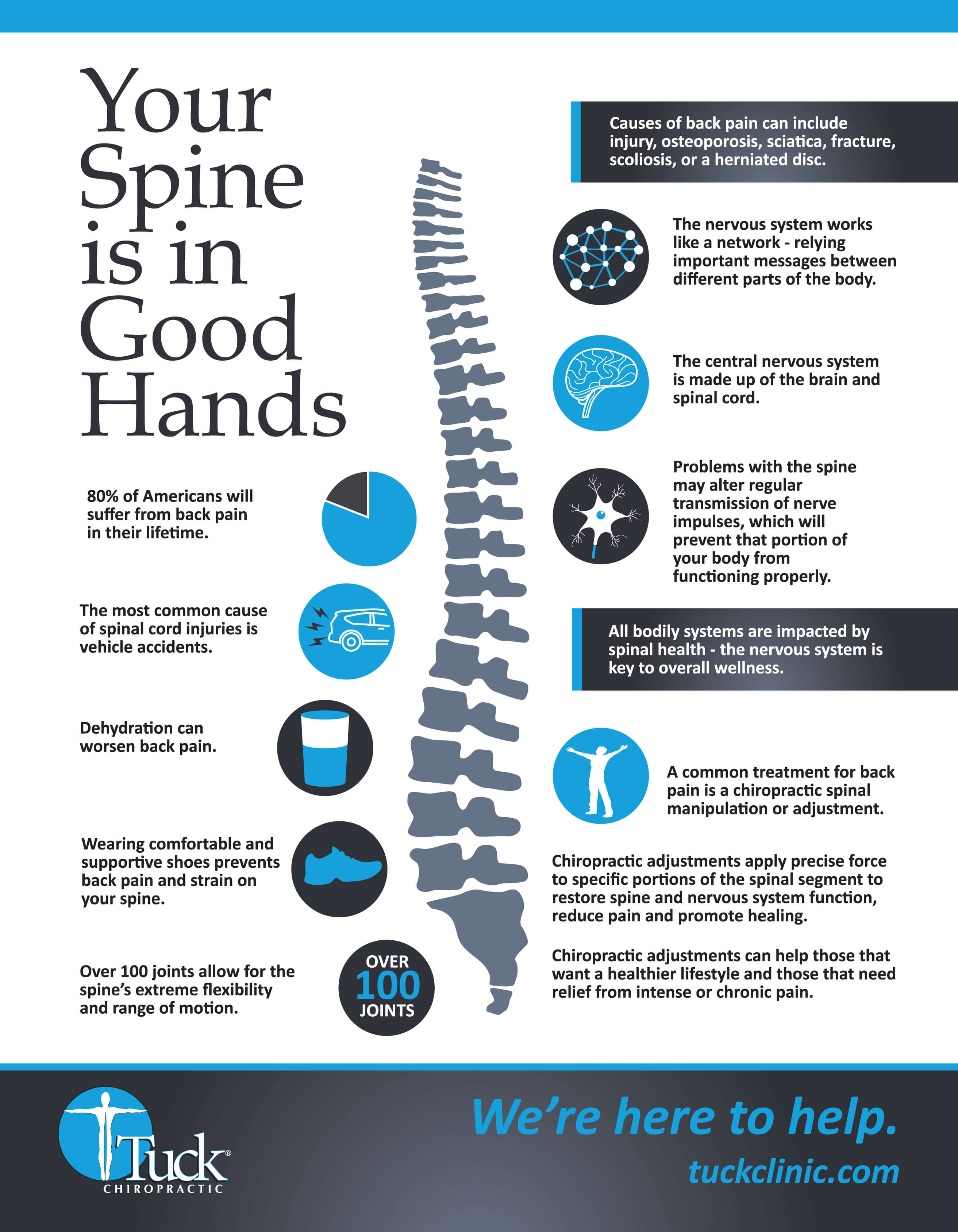Fight Neck And Back Pain By Identifying The Day-To-Day Practices That Could Be Liable; Making Small Modifications May Lead To A Pain-Free Presence
Fight Neck And Back Pain By Identifying The Day-To-Day Practices That Could Be Liable; Making Small Modifications May Lead To A Pain-Free Presence
Blog Article
Article Writer-Bates Svenningsen
Preserving proper pose and avoiding usual challenges in day-to-day tasks can dramatically impact your back health. From just how you sit at your desk to just how you raise hefty things, little modifications can make a large difference. Think of a day without the nagging neck and back pain that hinders your every move; the option may be simpler than you believe. By making a couple of tweaks to your day-to-day behaviors, you could be on your method to a pain-free existence.
Poor Pose and Sedentary Way Of Living
Poor pose and a less active lifestyle are 2 significant factors to pain in the back. When you slouch or hunch over while resting or standing, you placed unneeded pressure on your back muscle mass and back. This can cause muscle imbalances, tension, and ultimately, chronic back pain. Furthermore, sitting for extended periods without breaks or physical activity can deteriorate your back muscle mass and cause rigidity and pain.
To deal with bad posture, make a mindful effort to sit and stand straight with your shoulders back and straightened with your ears. Remember to keep read page on the ground and avoid crossing your legs for prolonged durations.
Integrating regular extending and strengthening workouts into your day-to-day regimen can also aid boost your pose and minimize pain in the back related to an inactive lifestyle.
Incorrect Training Techniques
Inappropriate training techniques can significantly contribute to pain in the back and injuries. When you lift heavy things, keep in mind to bend your knees and utilize your legs to lift, as opposed to relying on your back muscular tissues. Stay clear of turning your body while training and keep the object near your body to minimize pressure on your back. It's important to preserve a straight back and avoid rounding your shoulders while lifting to stop unnecessary stress on your back.
Always assess the weight of the object prior to raising it. If it's as well heavy, request for help or use tools like a dolly or cart to transfer it securely.
Keep in mind to take breaks throughout raising tasks to provide your back muscle mass a possibility to rest and prevent overexertion. By executing proper lifting techniques, you can stop back pain and lower the danger of injuries, guaranteeing your back stays healthy and balanced and strong for the long-term.
Lack of Normal Exercise and Extending
A sedentary lifestyle devoid of normal workout and stretching can significantly add to pain in the back and discomfort. When you do not engage in exercise, your muscular tissues end up being weak and stringent, leading to poor pose and raised pressure on your back. Routine workout assists enhance the muscles that sustain your spine, improving stability and reducing the danger of neck and back pain. Incorporating stretching https://chiropractorratingsnearme38495.buyoutblog.com/30721541/evaluating-the-link-between-chiropractic-services-and-athletic-performance into your regimen can likewise enhance flexibility, stopping tightness and discomfort in your back muscular tissues.
To prevent back pain triggered by a lack of exercise and stretching, aim for at the very least thirty minutes of modest physical activity most days of the week. Include exercises that target your core muscle mass, as a strong core can help reduce pressure on your back.
Additionally, take breaks to extend and move throughout the day, especially if you have a desk task. Simple stretches like touching your toes or doing shoulder rolls can assist relieve stress and prevent pain in the back. Prioritizing regular exercise and extending can go a long way in keeping a healthy back and decreasing pain.
Conclusion
So, remember to stay up right, lift with your legs, and stay energetic to stop pain in the back. By making basic adjustments to your daily routines, you can prevent the discomfort and constraints that feature neck and back pain. Deal with your spinal column and muscles by exercising good position, appropriate lifting strategies, and regular exercise. Your back will thanks for it!
